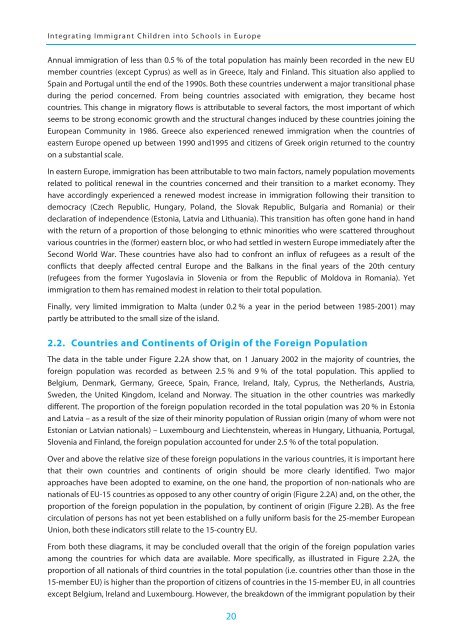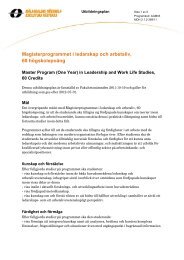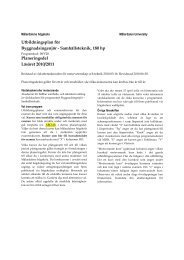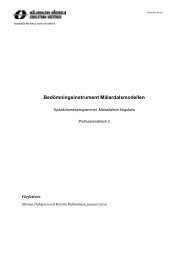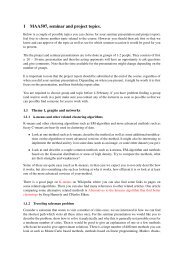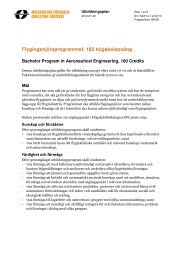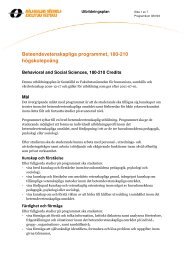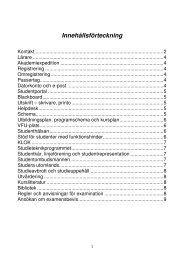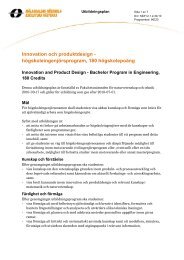Integrating Immigrant Children into Schools in Europe
Integrating Immigrant Children into Schools in Europe
Integrating Immigrant Children into Schools in Europe
Create successful ePaper yourself
Turn your PDF publications into a flip-book with our unique Google optimized e-Paper software.
<strong>Integrat<strong>in</strong>g</strong> <strong>Immigrant</strong> <strong>Children</strong> <strong><strong>in</strong>to</strong> <strong>Schools</strong> <strong>in</strong> <strong>Europe</strong>Annual immigration of less than 0.5 % of the total population has ma<strong>in</strong>ly been recorded <strong>in</strong> the new EUmember countries (except Cyprus) as well as <strong>in</strong> Greece, Italy and F<strong>in</strong>land. This situation also applied toSpa<strong>in</strong> and Portugal until the end of the 1990s. Both these countries underwent a major transitional phasedur<strong>in</strong>g the period concerned. From be<strong>in</strong>g countries associated with emigration, they became hostcountries. This change <strong>in</strong> migratory flows is attributable to several factors, the most important of whichseems to be strong economic growth and the structural changes <strong>in</strong>duced by these countries jo<strong>in</strong><strong>in</strong>g the<strong>Europe</strong>an Community <strong>in</strong> 1986. Greece also experienced renewed immigration when the countries ofeastern <strong>Europe</strong> opened up between 1990 and1995 and citizens of Greek orig<strong>in</strong> returned to the countryon a substantial scale.In eastern <strong>Europe</strong>, immigration has been attributable to two ma<strong>in</strong> factors, namely population movementsrelated to political renewal <strong>in</strong> the countries concerned and their transition to a market economy. Theyhave accord<strong>in</strong>gly experienced a renewed modest <strong>in</strong>crease <strong>in</strong> immigration follow<strong>in</strong>g their transition todemocracy (Czech Republic, Hungary, Poland, the Slovak Republic, Bulgaria and Romania) or theirdeclaration of <strong>in</strong>dependence (Estonia, Latvia and Lithuania). This transition has often gone hand <strong>in</strong> handwith the return of a proportion of those belong<strong>in</strong>g to ethnic m<strong>in</strong>orities who were scattered throughoutvarious countries <strong>in</strong> the (former) eastern bloc, or who had settled <strong>in</strong> western <strong>Europe</strong> immediately after theSecond World War. These countries have also had to confront an <strong>in</strong>flux of refugees as a result of theconflicts that deeply affected central <strong>Europe</strong> and the Balkans <strong>in</strong> the f<strong>in</strong>al years of the 20th century(refugees from the former Yugoslavia <strong>in</strong> Slovenia or from the Republic of Moldova <strong>in</strong> Romania). Yetimmigration to them has rema<strong>in</strong>ed modest <strong>in</strong> relation to their total population.F<strong>in</strong>ally, very limited immigration to Malta (under 0.2 % a year <strong>in</strong> the period between 1985-2001) maypartly be attributed to the small size of the island.2.2. Countries and Cont<strong>in</strong>ents of Orig<strong>in</strong> of the Foreign PopulationThe data <strong>in</strong> the table under Figure 2.2A show that, on 1 January 2002 <strong>in</strong> the majority of countries, theforeign population was recorded as between 2.5 % and 9 % of the total population. This applied toBelgium, Denmark, Germany, Greece, Spa<strong>in</strong>, France, Ireland, Italy, Cyprus, the Netherlands, Austria,Sweden, the United K<strong>in</strong>gdom, Iceland and Norway. The situation <strong>in</strong> the other countries was markedlydifferent. The proportion of the foreign population recorded <strong>in</strong> the total population was 20 % <strong>in</strong> Estoniaand Latvia – as a result of the size of their m<strong>in</strong>ority population of Russian orig<strong>in</strong> (many of whom were notEstonian or Latvian nationals) – Luxembourg and Liechtenste<strong>in</strong>, whereas <strong>in</strong> Hungary, Lithuania, Portugal,Slovenia and F<strong>in</strong>land, the foreign population accounted for under 2.5 % of the total population.Over and above the relative size of these foreign populations <strong>in</strong> the various countries, it is important herethat their own countries and cont<strong>in</strong>ents of orig<strong>in</strong> should be more clearly identified. Two majorapproaches have been adopted to exam<strong>in</strong>e, on the one hand, the proportion of non-nationals who arenationals of EU-15 countries as opposed to any other country of orig<strong>in</strong> (Figure 2.2A) and, on the other, theproportion of the foreign population <strong>in</strong> the population, by cont<strong>in</strong>ent of orig<strong>in</strong> (Figure 2.2B). As the freecirculation of persons has not yet been established on a fully uniform basis for the 25-member <strong>Europe</strong>anUnion, both these <strong>in</strong>dicators still relate to the 15-country EU.From both these diagrams, it may be concluded overall that the orig<strong>in</strong> of the foreign population variesamong the countries for which data are available. More specifically, as illustrated <strong>in</strong> Figure 2.2A, theproportion of all nationals of third countries <strong>in</strong> the total population (i.e. countries other than those <strong>in</strong> the15-member EU) is higher than the proportion of citizens of countries <strong>in</strong> the 15-member EU, <strong>in</strong> all countriesexcept Belgium, Ireland and Luxembourg. However, the breakdown of the immigrant population by their20


